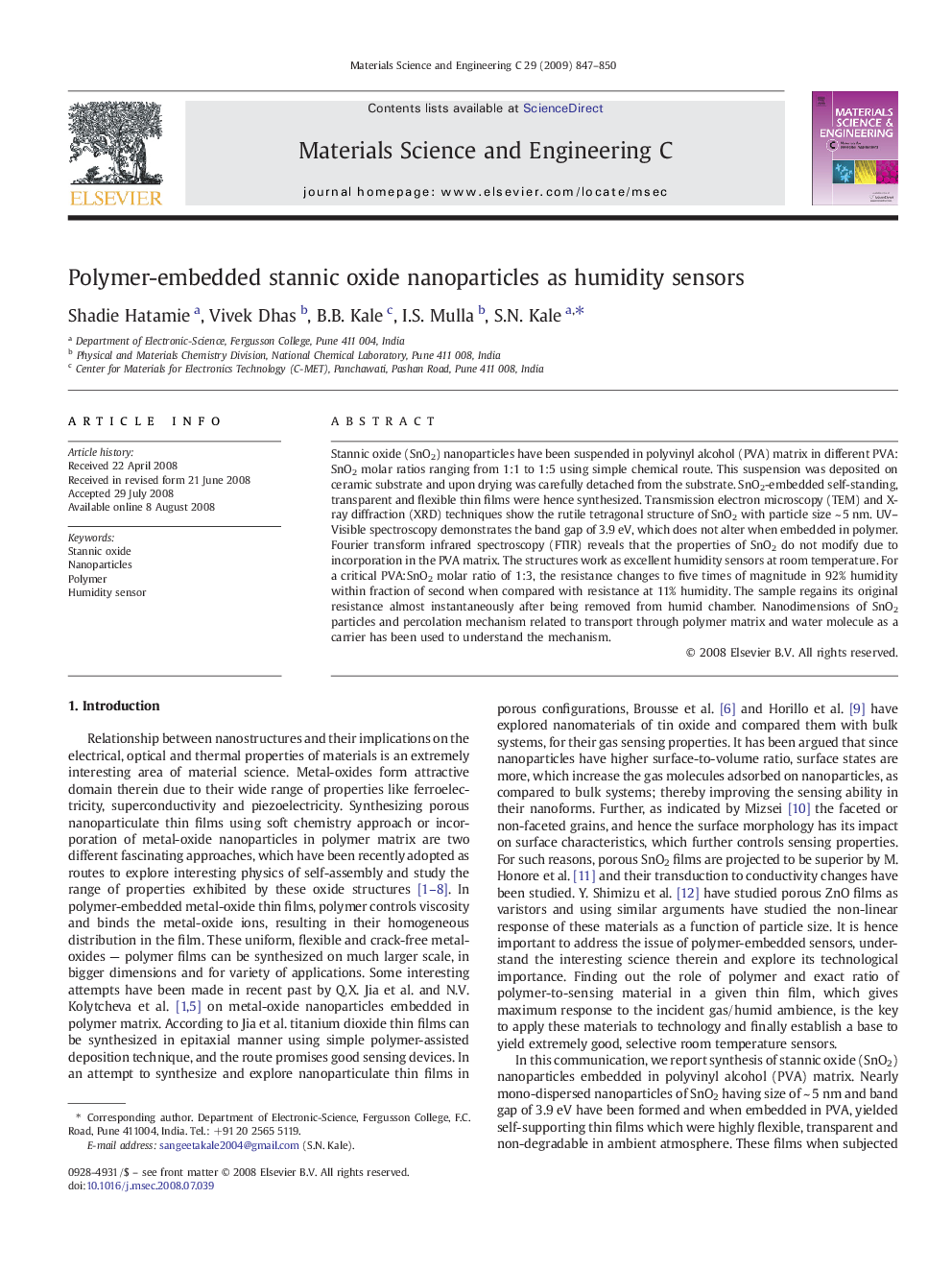| Article ID | Journal | Published Year | Pages | File Type |
|---|---|---|---|---|
| 1430157 | Materials Science and Engineering: C | 2009 | 4 Pages |
Abstract
Stannic oxide (SnO2) nanoparticles have been suspended in polyvinyl alcohol (PVA) matrix in different PVA:SnO2 molar ratios ranging from 1:1 to 1:5 using simple chemical route. This suspension was deposited on ceramic substrate and upon drying was carefully detached from the substrate. SnO2-embedded self-standing, transparent and flexible thin films were hence synthesized. Transmission electron microscopy (TEM) and X-ray diffraction (XRD) techniques show the rutile tetragonal structure of SnO2 with particle size ~Â 5Â nm. UV-Visible spectroscopy demonstrates the band gap of 3.9Â eV, which does not alter when embedded in polymer. Fourier transform infrared spectroscopy (FTIR) reveals that the properties of SnO2 do not modify due to incorporation in the PVA matrix. The structures work as excellent humidity sensors at room temperature. For a critical PVA:SnO2 molar ratio of 1:3, the resistance changes to five times of magnitude in 92% humidity within fraction of second when compared with resistance at 11% humidity. The sample regains its original resistance almost instantaneously after being removed from humid chamber. Nanodimensions of SnO2 particles and percolation mechanism related to transport through polymer matrix and water molecule as a carrier has been used to understand the mechanism.
Related Topics
Physical Sciences and Engineering
Materials Science
Biomaterials
Authors
Shadie Hatamie, Vivek Dhas, B.B. Kale, I.S. Mulla, S.N. Kale,
